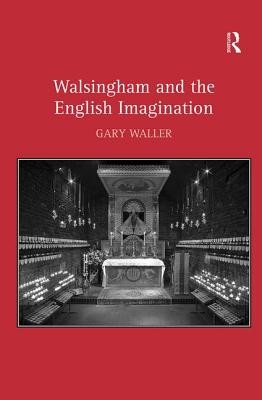
- We will send in 10–14 business days.
- Author: Gary Waller
- Publisher: Routledge
- ISBN-10: 1409405095
- ISBN-13: 9781409405092
- Format: 15.6 x 23.4 x 1.6 cm, kieti viršeliai
- Language: English
- SAVE -10% with code: EXTRA
Reviews
Description
Drawing on history, art history, literary criticism and theory, gender studies, theology and psychoanalysis, this interdisciplinary study analyzes the cultural significance of the Shrine of our Lady of Walsingham, medieval England's most significant pilgrimage site devoted to the Virgin Mary, which was revived in the twentieth century, and in 2006 voted Britain's favorite religious site. Covering Walsingham's origins, destruction, and transformations from the Middle Ages to the present, Gary Waller pursues his investigation not through a standard history but by analyzing the invented traditions and varied re-creations of Walsingham by the English imagination- poems, fiction, songs, ballads, musical compositions and folk legends, solemn devotional writings and hostile satire which Walsingham has inspired, by Protestants, Catholics, and religious skeptics alike. They include, in early modern England, Erasmus, Ralegh, Sidney, and Shakespeare; then, during Walsingham's long protestantization from the sixteenth through nineteenth centuries, ballad revivals, archeological investigations, and writings by Agnes Strickland, Edmund Waterton, and Hopkins; and in the modern period, writers like Eliot, Charles Williams, Robert Lowell, and A.N. Wilson. The concluding chapter uses contemporary feminist theology to view Walsingham not just as a symbol of nostalgia but a place inviting spiritual change through its potential sexual and gender transformation.
EXTRA 10 % discount with code: EXTRA
The promotion ends in 22d.00:35:31
The discount code is valid when purchasing from 10 €. Discounts do not stack.
- Author: Gary Waller
- Publisher: Routledge
- ISBN-10: 1409405095
- ISBN-13: 9781409405092
- Format: 15.6 x 23.4 x 1.6 cm, kieti viršeliai
- Language: English English
Drawing on history, art history, literary criticism and theory, gender studies, theology and psychoanalysis, this interdisciplinary study analyzes the cultural significance of the Shrine of our Lady of Walsingham, medieval England's most significant pilgrimage site devoted to the Virgin Mary, which was revived in the twentieth century, and in 2006 voted Britain's favorite religious site. Covering Walsingham's origins, destruction, and transformations from the Middle Ages to the present, Gary Waller pursues his investigation not through a standard history but by analyzing the invented traditions and varied re-creations of Walsingham by the English imagination- poems, fiction, songs, ballads, musical compositions and folk legends, solemn devotional writings and hostile satire which Walsingham has inspired, by Protestants, Catholics, and religious skeptics alike. They include, in early modern England, Erasmus, Ralegh, Sidney, and Shakespeare; then, during Walsingham's long protestantization from the sixteenth through nineteenth centuries, ballad revivals, archeological investigations, and writings by Agnes Strickland, Edmund Waterton, and Hopkins; and in the modern period, writers like Eliot, Charles Williams, Robert Lowell, and A.N. Wilson. The concluding chapter uses contemporary feminist theology to view Walsingham not just as a symbol of nostalgia but a place inviting spiritual change through its potential sexual and gender transformation.


Reviews